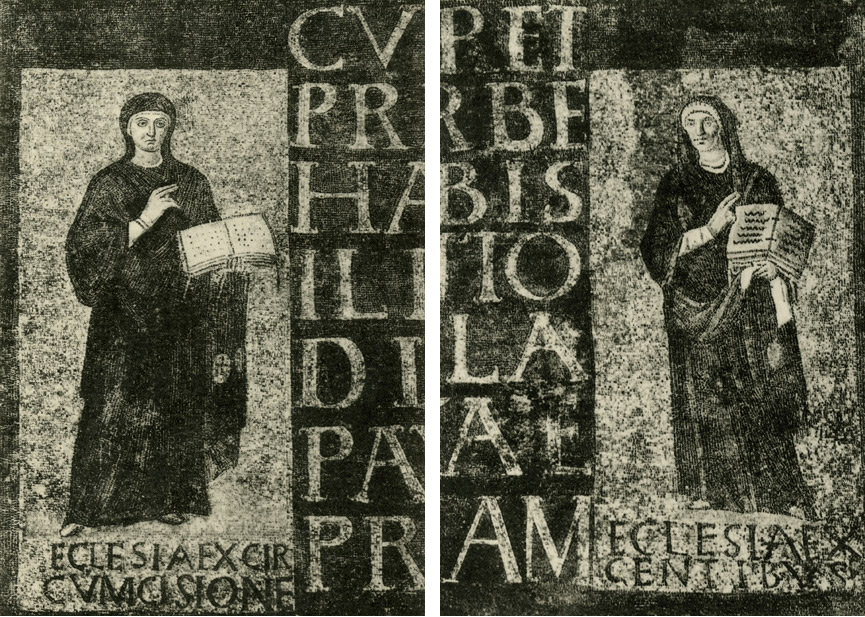At the heart of the "crisis of identity" of emergent Christianity lies the question of the relationship of the new faith with the Jewish community from which it emerges. While the earliest followers of Jesus were Jews in terms of ethnic descent and ritual practice, the survival of the early Church (and the fortunes of Christianity in the Roman world ) ultimately depended on the rapidly growing number of converts from "the nations" gentiles or pagans, in Christian discourse. Eloquent witness to this tension can be found already in the letters of the apostle Paul and its reverberations in subsequent theology and exegesis.
Visual testimony to this seminal ideal of a dual source of new believers may be offered by a very intriguing pair of female figures in the Church of Santa Sabina all'Aventino in Rome. Over the cypress doors of the church, there is a dedicatory mosaic (recording the building of the church by Peter the Illyrian in the early fifth-century C.E.) which is flanked by two women who bear the titular subscriptions ecclesia ex circumcisione ("The Church from the Circumcision") and ecclesia ex gentibus, ("The Church from the Nations"). Though some scholars have suggested that these figures are the Old and New Testaments, it seems far more likely that they are intended to represent the two sources of the Church: Christians of Jewish origins and the Christians who were converts from pagan backgrounds. What these striking female figures most definitely should not be confused with is the later medieval representation of the antinomy between Church and Synagogue.
